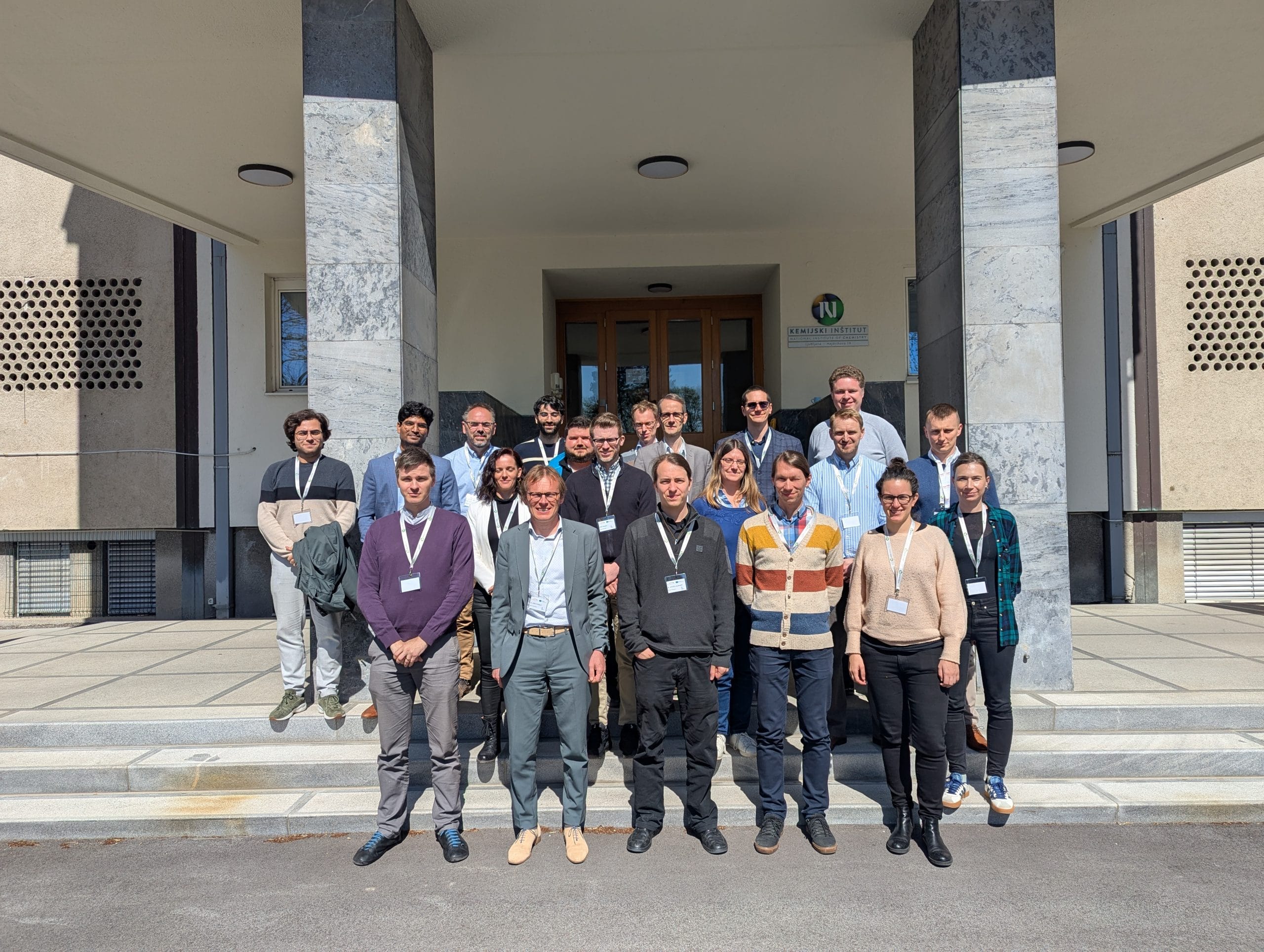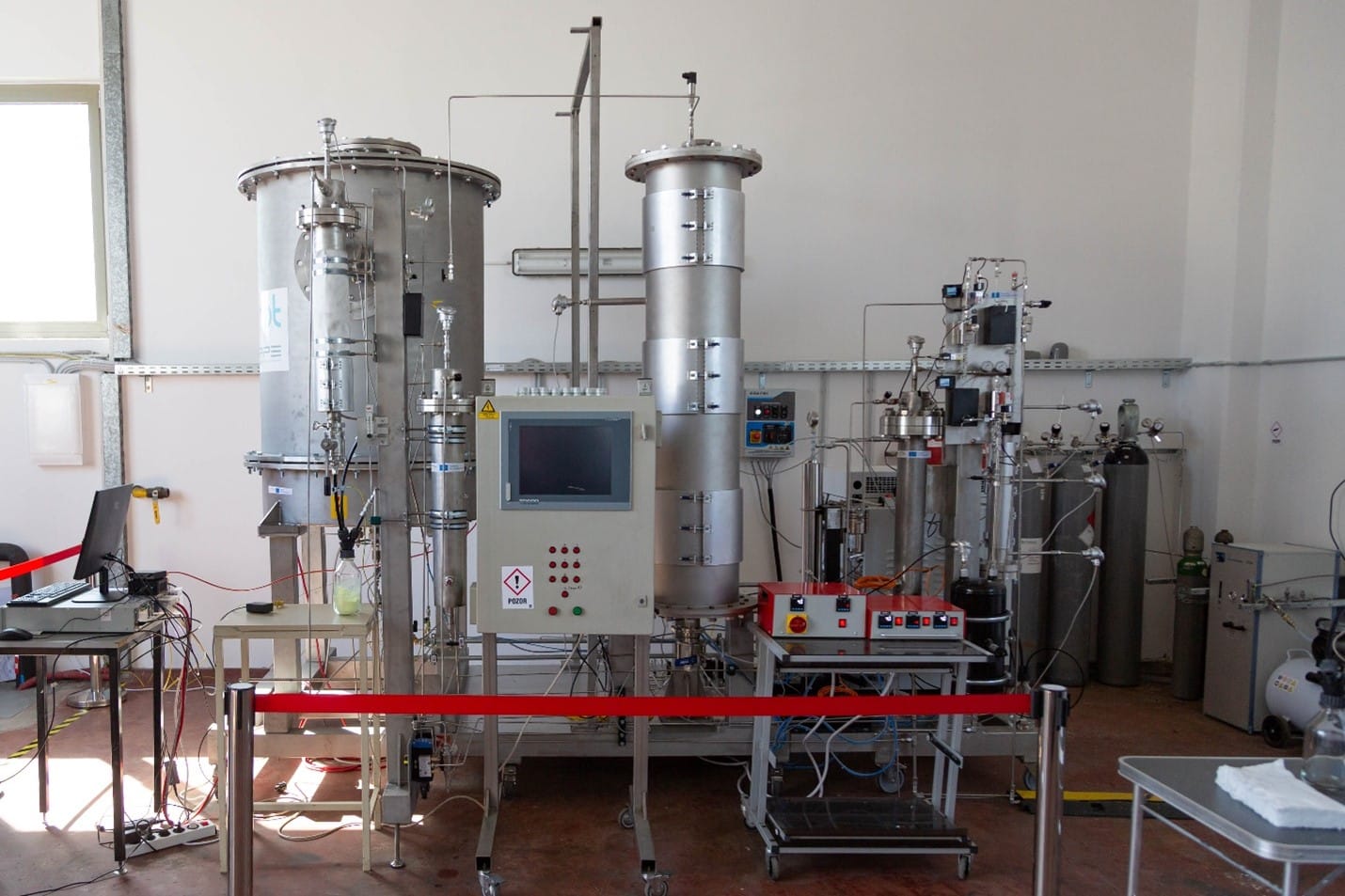On 7 April 2025, the e-CODUCT consortium met in Ljubljana, Slovenia, for its 30-month general assembly. All project partners came together to review progress, harmonise objectives and decide on the transition to the next phase of the project implementation. The meeting, hosted by NIC and CO NOT, was an important milestone to reflect on what has been achieved so far and prepare for the work ahead.


The e-CODUCT pilot unit which is installed, was developed to simultaneously utilize acid gas components (CO₂ and H₂S), by converting them into an intermediate, carbonyl sulfide (COS), and then into valuable chemicals, sulphur (S) and carbon monoxide (CO). The latter is hydrogenated into methanol. This pilot line was developed and manufactured under the supervision of the Centre of Excellence Low Carbon Technologies (CO NOT) and the Department of Catalysis and Chemical Reaction Engineering at the National Institute of Chemistry (NIC), partners of the e-CODUCT project.
Pilot line features the first electrified fluidized-bed reactor unit of its kind. Utilizing electrothermal catalysis, the e-CODUCT technology enables the pilot reactor to quickly and efficiently deliver concentrated heat locally, allowing to reach temperatures in the reactive zone up to 1200 °C. Such heat delivery unlocks the potential of efficiently carrying out highly endothermic reactions that require immense amounts of heat. This offers significant environmental and economic benefits for various industrial sectors, including petrochemicals, biogas production and the energy sector, and facilitates cross-sector collaboration and sustainable business opportunities.
Prof. Joris W. Thybaut of Ghent University, e-CODUCT coordinator remarked:
“Both elemental sulfur and CO are important intermediates in the chemical industry with many daily-life applications ranging from pharmaceuticals over paints to tires. Compared to currently existing gas treatment processes, the e-CODUCT technology is better integrated and, hence, more efficient. Moreover, thanks to the ETFB reactor which has been inaugurated today, e-CODUCT will rely on renewable electricity and the technology is developed to rapidly respond to variations in availability of electricity. In summary, with e-CODUCT we’re realizing a triple win: thanks to renewable energy, e-CODUCT will employ a greenhouse gas to convert a toxic component into useful chemicals”.

The launch of the pilot reactor is an example of the effectiveness of innovation and collaboration in tackling critical environmental challenges. Once the project partners had agreed on a concept based on innovative research into e-CODUCT technology, a number of subcontractors took on key roles in the detailed engineering and fabrication of the pilot line. These subcontractors include Thermal and Material Engineering Centre sp z.o.o. (Poland), which supervised the detail engineering of the ETFB reactor, CPPE, d.o.o. (Celje, Slovenia), which managed the detailed engineering of the entire pilot line and its fabrication; and Colbyco, d.o.o. (Ljubljana, Slovenia), which was responsible for process control and data acquisition, among other things. All activities were coordinated and monitored by researchers from CO NOT and NIC.
Looking ahead, a key objective is to demonstrate the technology at a larger scale. Data generated from the pilot operation will feed into a comprehensive techno-economic model, validating the system’s feasibility and potential as a solution for a more sustainable and circular economy.